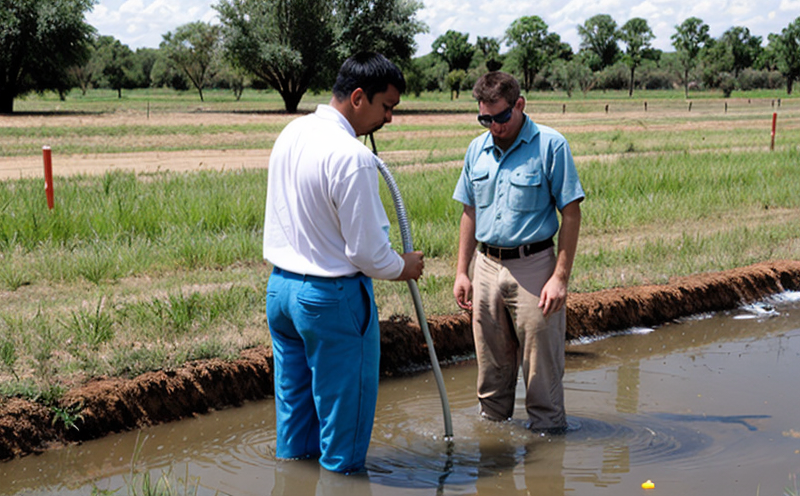EPA 8141 Organophosphorus Pesticides Test in Groundwater
The EPA Method 8141 is a critical standard used to measure organophosphorus pesticides in groundwater. This test ensures that drinking water sources are safe and comply with the Environmental Protection Agency's regulations.
Organophosphorus pesticides, commonly used for agricultural purposes, can leach into groundwater through improper handling or heavy rainfall. The presence of these compounds is a significant concern as they pose health risks to humans and aquatic life. By adhering to EPA Method 8141, laboratories ensure accurate and reliable results that help regulatory authorities make informed decisions regarding water quality.
The method involves several steps including the collection of groundwater samples, extraction of organophosphorus pesticides using a solvent-based procedure, and quantification through gas chromatography with mass spectrometry (GC-MS). This approach allows for precise detection even at trace levels. The analytical process requires strict adherence to protocol to ensure accurate results.
Groundwater is a vital resource that supports ecosystems, agriculture, and human consumption. Ensuring its safety is paramount, especially in areas where organophosphorus pesticides are commonly used. Compliance with EPA Method 8141 helps protect public health by identifying potential contaminants early on. This method plays an essential role in environmental monitoring programs aimed at safeguarding water resources.
For laboratories conducting this test, understanding the intricacies of EPA Method 8141 is crucial. It involves not only knowing how to prepare and analyze samples but also interpreting results accurately. Regular calibration of equipment and proficiency training for staff ensure consistent quality in testing. Moreover, keeping up-to-date with any updates or amendments to the method guarantees compliance with current standards.
The importance of this test cannot be overstated; it contributes significantly towards maintaining ecological balance by preventing contamination from entering our groundwater systems. Compliance with EPA Method 8141 ensures that we protect both natural habitats and human communities alike.
Benefits
- Ensures compliance with EPA regulations for safe drinking water sources.
- Identifies potential contaminants early, preventing further spread into groundwater systems.
- Supports environmental monitoring programs aimed at safeguarding natural habitats and human communities alike.
- Facilitates informed decision-making by regulatory authorities regarding water quality standards.
- Promotes public health by reducing exposure to hazardous compounds through accurate testing methods.
Eurolab Advantages
At Eurolab, we offer comprehensive groundwater and aquifer monitoring services that include the EPA 8141 Organophosphorus Pesticides Test. Our state-of-the-art facilities equipped with high-precision instruments ensure accurate results every time.
We employ highly qualified personnel trained specifically in performing this type of analysis. This expertise guarantees consistent quality across all our tests, allowing us to meet stringent requirements set forth by regulatory bodies like the EPA.
Our commitment to excellence extends beyond just technical proficiency; we also offer fast turnaround times and transparent communication regarding results. With Eurolab, you can trust that your water samples will receive top-notch attention from start to finish.
Use Cases and Application Examples
The EPA 8141 Organophosphorus Pesticides Test is widely used in various sectors including agriculture, industry, and environmental conservation. For instance, farmers who use organophosphorus pesticides can benefit from this test to ensure their practices do not lead to groundwater contamination.
In addition, industrial facilities located near water bodies often conduct these tests as part of their compliance programs. By identifying any unwanted compounds in advance, they can take necessary steps to mitigate risks.
Environmental agencies also rely on such tests to monitor overall water quality across different regions. This helps track trends over time and implement targeted interventions where needed.





